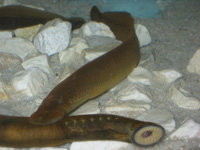Molecular Scientists Reveal Extraordinary Properties of Ordinary Glasses
Technologically valuable ultrastable glasses can be produced in days or hours with properties corresponding to those that have been aged for thousands of years, computational and laboratory studies have confirmed.
Aging makes for higher quality glassy materials because they have slowly evolved toward a more stable molecular condition. This evolution can take thousands or millions of years, but manufacturers must work faster. Armed with a better understanding of how glasses age and evolve, researchers at the universities of Chicago and Wisconsin-Madison raise the possibility of designing a new class of materials at the molecular level via a vapor-deposition process. (more…)

